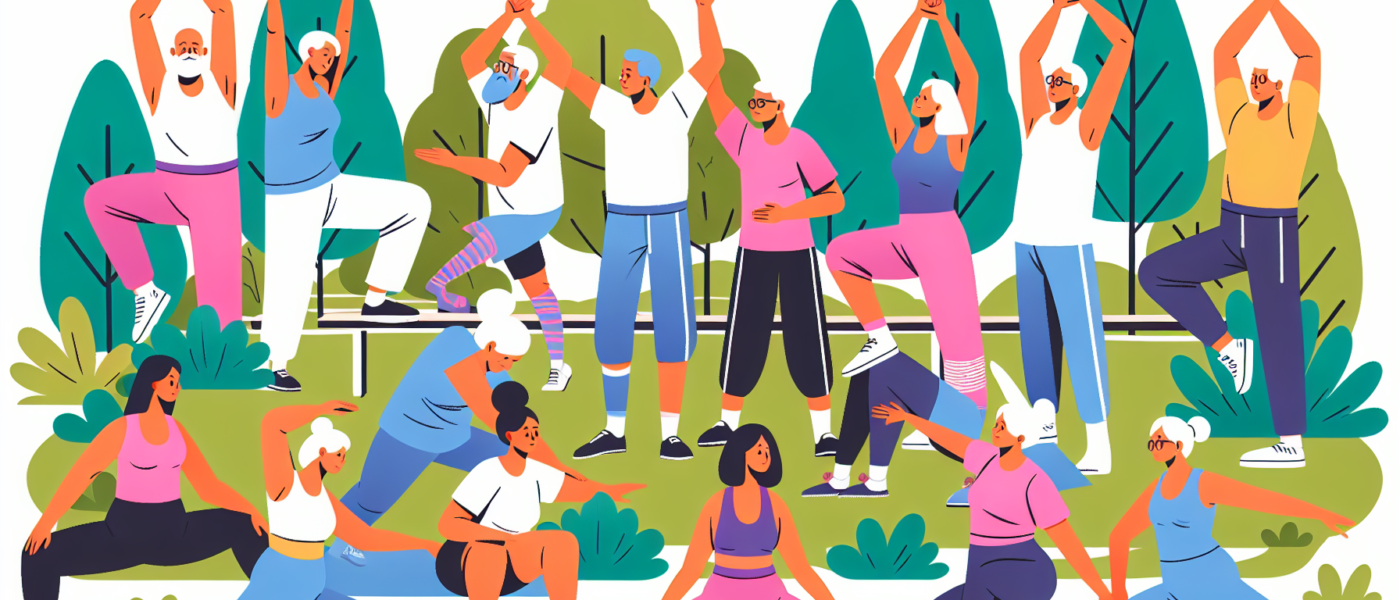Flexibility Exercises for Aging Bodies
Key Takeaways
Flexibility exercises are essential for aging bodies to maintain mobility, reduce pain, and improve overall quality of life. This article explores various exercises and tips tailored specifically for older adults, highlighting safety and effectiveness.
Introduction
As we age, our bodies undergo numerous changes that can affect our flexibility, strength, and balance. Limited flexibility can lead to stiffness, pain, and an increased risk of injuries. Incorporating flexibility exercises into daily routines can help maintain mobility, improve posture, reduce pain, and enhance overall well-being. This article delves into effective flexibility exercises specifically designed for aging bodies and provides practical tips for performing them safely.
The Importance of Flexibility for Aging Bodies
Flexibility is crucial for various reasons:
- Enhances Mobility: Flexibility exercises improve the range of motion in the joints, aiding in smoother and more comfortable movement.
- Reduces Pain and Stiffness: Regular stretching can alleviate joint tension and muscle stiffness, significantly reducing pain.
- Prevents Injuries: Flexible muscles and tendons are less likely to strain or tear, reducing the risk of injuries.
- Improves Balance and Posture: Stretching helps maintain better posture and balance, which are vital for preventing falls and maintaining independence.
Effective Flexibility Exercises for Aging Bodies
Below are various flexibility exercises that can be beneficial for aging individuals. Each exercise focuses on different muscle groups and joint areas, ensuring a comprehensive routine.
1. Neck Stretches
How to Perform:
- Sit or stand with your back straight.
- Slowly tilt your head towards your right shoulder, aiming to touch it with your ear. Hold for 15-30 seconds.
- Return to the starting position and repeat on the left side.
- Repeat 3-5 times on each side.
2. Shoulder Rolls
How to Perform:
- Sit or stand with your back straight and arms relaxed at your sides.
- Slowly roll your shoulders forward in a circular motion for 10-15 seconds.
- Reverse the motion and roll your shoulders backward for another 10-15 seconds.
3. Overhead Reach
How to Perform:
- Stand with feet shoulder-width apart and arms relaxed at your sides.
- Slowly lift your right arm overhead, reaching towards the ceiling. Hold for 15-30 seconds.
- Lower your arm and repeat with the left arm.
- Repeat 3-5 times on each side.
4. Upper Back Stretch
How to Perform:
- Stand or sit with your back straight and feet shoulder-width apart.
- Interlace your fingers and extend your arms in front of you at shoulder height.
- Gently push your arms forward, rounding your upper back. Hold for 15-30 seconds.
- Release and repeat 3-5 times.
5. Seated Hip Stretch
How to Perform:
- Sit on a sturdy chair with your feet flat on the floor.
- Place your right ankle on your left knee.
- Gently press down on your right knee, leaning slightly forward. Hold for 15-30 seconds.
- Repeat with the left leg.
- Repeat 3-5 times on each side.
6. Standing Quadriceps Stretch
How to Perform:
- Stand behind a chair or close to a wall for support.
- Bend your right knee and bring your heel towards your buttocks.
- Grab your right ankle with your right hand and hold for 15-30 seconds.
- Release and repeat with the left leg.
- Repeat 3-5 times on each side.
7. Hamstring Stretch
How to Perform:
- Stand with your feet hip-width apart and engage your core muscles.
- Step your right foot forward and flex your foot.
- Slowly bend at your hips, keeping your back straight, and reach towards your right toes. Hold for 15-30 seconds.
- Return to the starting position and repeat with the left leg.
- Repeat 3-5 times on each side.
8. Calf Stretch
How to Perform:
- Stand facing a wall, about an arm’s length away.
- Step your right foot back, keeping it straight and press your heel into the floor.
- Lean into the wall, bending your left knee slightly. Hold for 15-30 seconds.
- Switch legs and repeat.
- Repeat 3-5 times on each side.
Tips for Safe and Effective Stretching
To maximize the benefits of flexibility exercises and minimize the risk of injury, consider the following tips:
- Warm-Up First: Always warm up your muscles with light activity, such as walking, before stretching.
- Stretch Slowly: Perform each stretch slowly and gently, avoiding any bouncing or jerking movements.
- Breathe Deeply: Take deep breaths while stretching to help relax your muscles.
- Listen to Your Body: Stretch until you feel gentle tension, but never to the point of pain.
- Stay Consistent: Consistency is key. Aim to perform flexibility exercises daily.
- Use Support: Use a chair, wall, or other support if needed to maintain balance and stability.
- Modify When Necessary: Adjust the intensity and duration of stretches based on your comfort level and physical condition.
Conclusion
Incorporating flexibility exercises into the daily routine is essential for aging individuals to maintain mobility and improve overall quality of life. By focusing on key areas such as the neck, shoulders, back, hips, and legs, these exercises can alleviate pain, improve posture, and reduce the risk of injuries. Always remember to stretch gently, listen to your body, and stay consistent. With a regular routine, you can enjoy the numerous benefits of enhanced flexibility as you age.

